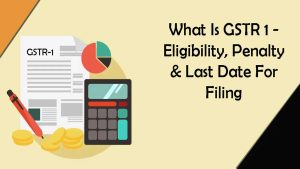What Is GST
GST is an Acronym for Goods and Services Tax. It is an indirect tax that has substituted other indirect taxes such as the excise duty, VAT, service tax, etc. It was passed in Parliament on 29/3/2017 and came into effect on 1/7/2017.
In simple words, GST is imposed on supply of goods and services. Goods and Services Tax Act in India is a complex, multi-stage, destination-based tax imposed on every added value. GST is a single indirect tax law for the whole country.
Prior to the implementation of the Goods and Services Tax, the Indian indirect tax structure was as follows:
The tax is imposed on every point of sale under the GST system. Central GST and State GST are levied for the intra-state sales. GST is paid on all interstate transactions.
Value Addition
Let’s take an example of a biscuit company.
A maker producing biscuits purchases flour , sugar, and other products. The input value increases when the sugar and flour are mixed together and baked into biscuits.
The manufacturer then sells those biscuits to the warehousing dealer who packs and marks vast quantities of biscuits in containers. This is yet another value applied to biscuits. The warehousing agent then sells it to the seller after this.
The manufacturer bundles the biscuits in smaller amounts, and invests in the biscuits promotion, thus increasing their value. GST is imposed on those added values.
Based on destination
Consider the goods produced in Madhya Pradesh and sold in Gujrat to the final customer. The entire tax will come to Gujrat, not Madhya Pradesh, as the goods and service tax is imposed only at point of consumption.
History Of GST
The GST journey started from the year 2000 when a bill drafting committee was set up. It took the Law 17 years to grow. The GST Bill had been passed in Lok Sabha and Rajya Sabha in 2017. The GST law came into effect on 1st July 2017.
2000 – Prime Minister Atal Bihari Vajpayee set up a committee to draft GST law
2004 – A task force concludes GST must be implemented to improve current tax structure
2006 – Finance Minister proposes GST introduction from April 1 2010
2007 – CST to be phased out. Rates reduced from 4% to 3%
2008 – EC finalises dual GST structure to have seperate levy, legislation
2010 – Project to computerise commercial taxes launched but GST implementation postponed
2011 – Constitution Amendment Bill to enable GST Law introduced
2012 – Standing Committee begins discussion on GST but stalled it over clause 279B
2013 – Standing Committee tables its report on GST
2014 – GST was reintroduced in Parliament by Finance Minister
2015 – GST Bill passed in Lok Sabha but not passed in Rajya Sabha
2016 – GSTN goes live
2016 – Amended Model GST law passed in both Houses. President gives assent
2017 – Four supplementary GST Bills passed in Lok Sabha and approved by Cabinet
Rajya Sabha passes four supplementary GST Bills. Final GST to implemented on July 1,2017



